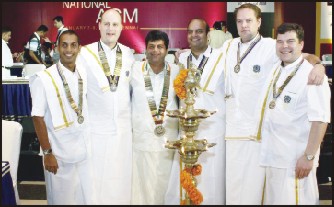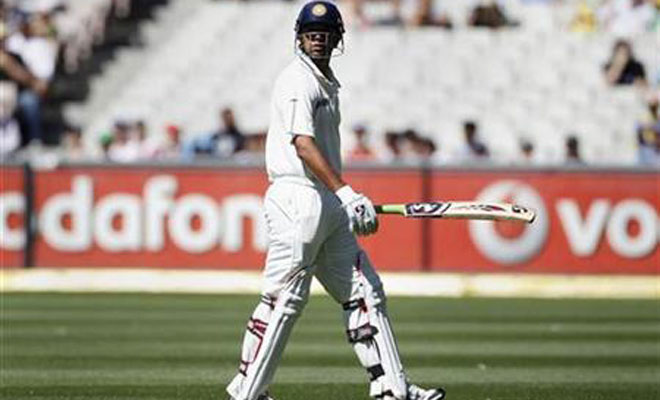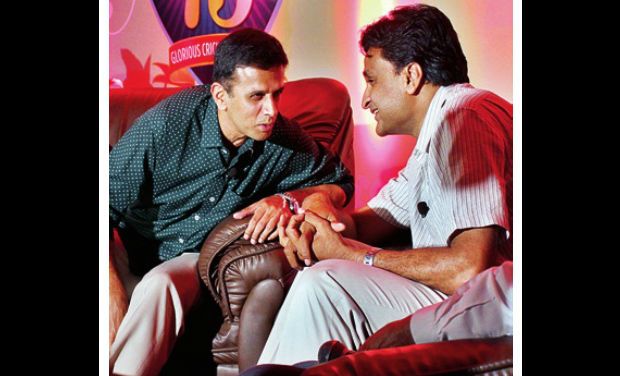- Ashwinni (third from left) is seen with National Presidents of Round Tables of other countries.
by S.N. Venkatnag Sobers
Mysore :
Seems Mysoreans are going places. Yesterday it was reported that Dr. Ashith Acharya was Indian first Forensic Dentist and now we have our city’s industrialist Ashwinni Kumar Hemdev, who has become the first Indian to be awarded the prestigious International Round Tabler of the Year award 2012-2013. This award has been bestowed upon Ashwinni for his public service through Round Table. It is indeed an honour considering that here are 40,000 Round Tablers from 67 countries! Ashwinni is the first Indian to get the prestigious award since the inception of Round Table India 50 years ago in 1962 by John Barton in then Madras.
Ashwinni Kumar Hemdev, Managing Director, Darshan Flexibles Private Limited, has followed the footsteps of his father P.G. Hemdev, both in business and social service. The senior Hemdev was the founder member of Mysore Round Table-21, one of the oldest Round Table in the country. So as Ashwinni says “Round Table is in my blood I suppose so it comes naturally to me.” Considering the fellowship is a big part of Round Table it is no surprise that jovial Ashwinni Kumar Hemdev has won this honour.
Ashwinni also has the record of being the first President of Round Table of India from Mysore, “and that too during the Golden Jubilee year of Round Table India made it quiet an interesting time” says an ever smiling Ashwinni.
Speaking about Round Table, Ashwinni Kumar Hemdev said that it has been an excellent experience to be a part of an organisation which not only gives importance to fellowship which helps in personality development but also involves itself with a single minded mission — to educated the under privileged children in the country.
Being the President of Round Table India, Ashwinni Hemdev travelled extensively to various places throughout the country and abroad. In fact he says “It gave me an opportunity to see the world. Also, thanks to my wife Divya for holding fort when I was busy travelling.” When asked how his wife tolerated all his travelling Ashwinni says “Divya knew what to expect as she is a Circler, the ladies wing of Round Table and also she joined me in quite a few travels.”
Apart from his works during his more than a decade association with Mysore Round Table -21, Ashwinni was instrumental in taking Round Table to Singapore. He has also the credit of conducting Round Table International World Meeting in 2012, which was named a ‘Wah India’ in Hyderabad. It was the first time that a world meeting of the Tablers and Circlers was held in India.
Though Ashwinni loves Round Table, he says “Its time for me to retire” with a hint of sadness. The tenure of a Round Tabler ends when he turns 40 and Ashwinni has just a year left. “Yes, I am a little disheartened, but this is what keeps Round Table fresh and flush with new ideas and friendships,” says Ashwinni. He now jokes saying he will have more time to spend with his family while also looking forward to serve as an Honorary Tabler for a year or two.
source: http://www.starofmysore.com / Star of Mysore / Home> Feature Articles / September 15th, 2013






